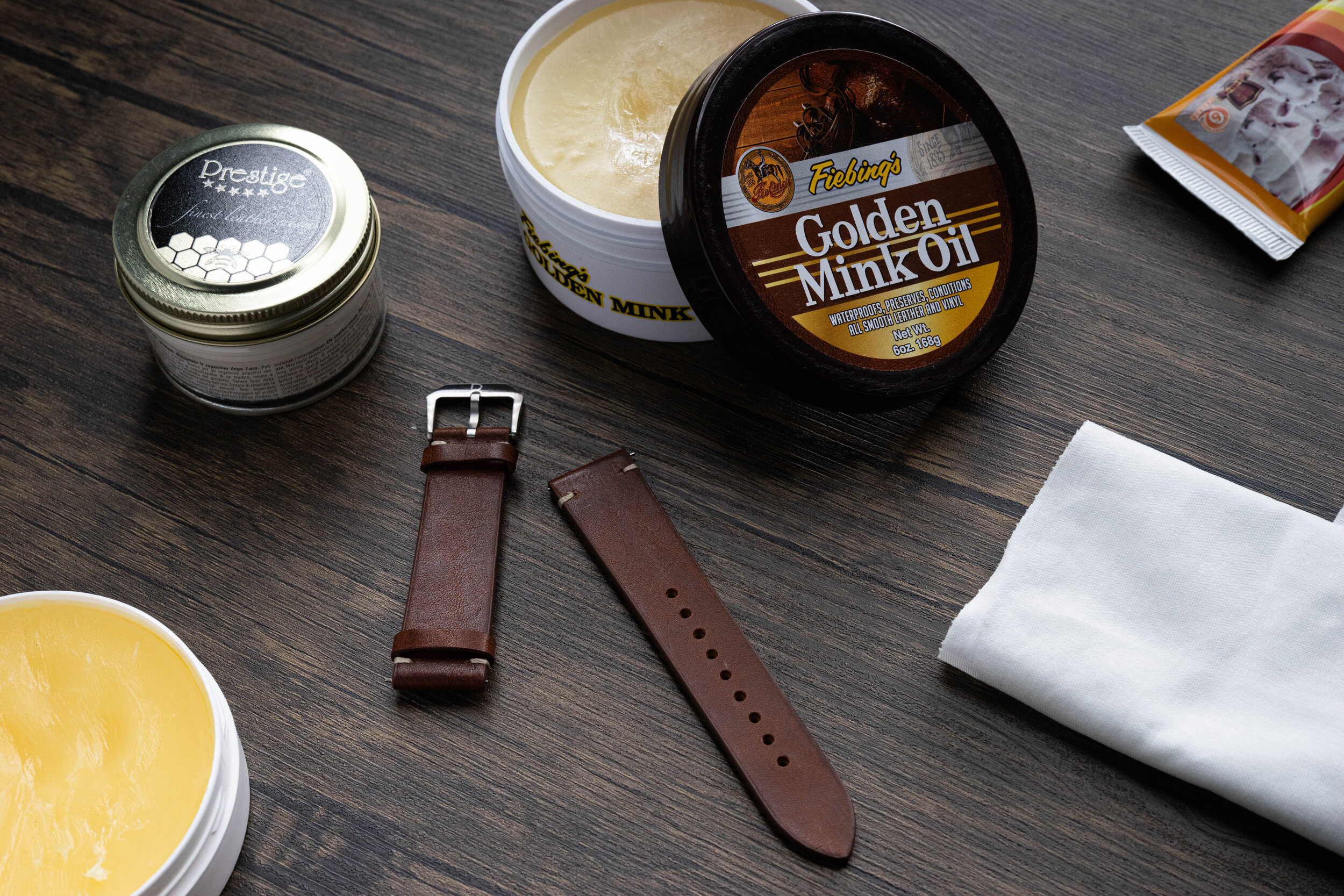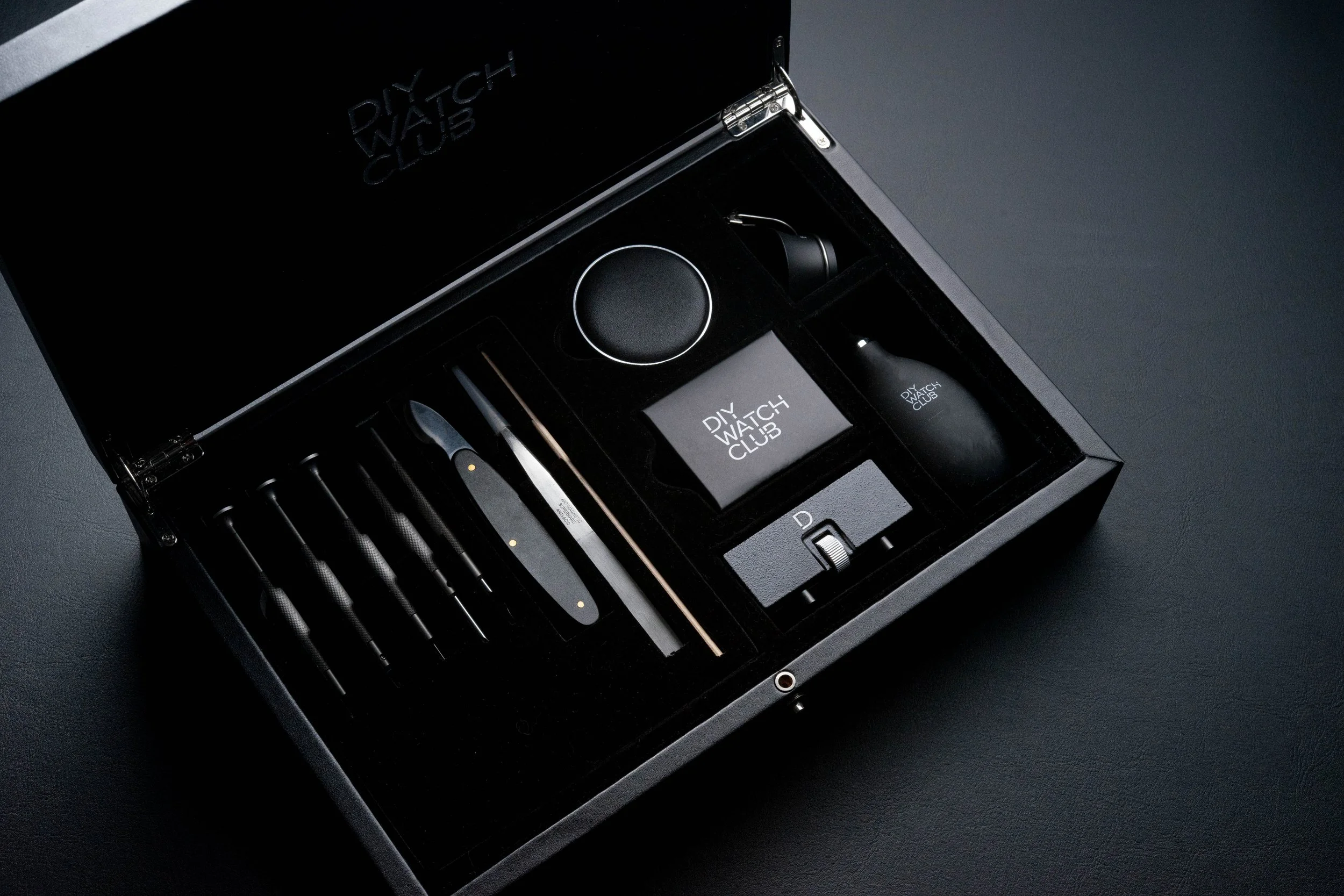How to Condition Leather Straps
And how to further protect them from external elements
You need to condition your leather straps regulalry as the moisture inside will dry up and form cracks over time.
What is Leather Conditioning
To maintain healthy skin condition, you need to apply skin care products diligently to keep your skin hydrated and soft. So does leather. It is a natural material that loses its moisture over time and may form cracks or splits. If you wish to keep it flexible and supple, nourish it regularly. And the nourishment we do is called "conditioning". In this article, we will show you how to condition and protect your leather straps properly.
Points to Note when Conditioning your Leather Straps
Leather can be easily ruined if the conditioning products or methods used are inappropriate. Here are a few essential points to keep in mind before proceeding to leather maintenance:
Do NOT condition the leather strap too frequently
Even if conditioning does help keep the leather straps in the best condition, doing it day to day could be counterproductive. After absorbing adequate moisture, leather will stop soaking up the conditioner. The excess may then clog the pore and stay on the surface, making the strap sticky.
Normally, conditioning your leather strap every 2-3 months would be enough. But it's hard to tell an exact time frame for how often you should condition your leather strap as it varies wildly, depending on the types of leather, the environment and your personal usage. So the rule of thumb is: condition the strap when the leather begins to look dry or when it’s starting to lose its suppleness.
Do NOT apply too much every time
By the same token, oversaturation may happen when the leather takes in too much moisture at a time. Therefore, applying two to three layers of leather conditioner each time is fully sufficient.
Always do a patch test
You'll see various kinds of leather conditioners on the market, but not every product is appropriate to apply on the leather you own or its result may not satisfy you. If you accidentally use an inappropriate product on your leather item, it can cause permanent discoloration or deterioration. For that reason, we recommend doing a patch test on a discreet area first and use it all over the leather after making certain they are compatible with each other.
Types of Leather Conditioner
So you may ask: there are countless leather conditioning products outside, how can I know if it suits my leather goods? Indeed, people can easily get confused by their distinct names. But leather conditioner basically comes in four principal forms:
There are various leather conditioning products in the market, but not every product is appropriate to apply on the leather you own or its result may not satisfy you.
Conditioning oil
It is an oil-based product that helps moisturize, soften and add a sleek shine to the leather. The most commonly used ones are mink oil and neatsfoot oil. But you have to pay special attention to the manufacturer instructions or carefully choose which leather oil to use. If you apply the oil that is not appropriate for your leather goods, it can make the surface of the leather sticky.
Conditioning cream
Its texture is lighter than oil, making it suitable for thinner leathers and related applications. Similar to conditioning oil, it not merely nourishes the leather items, but also puts shine on it.
Wax conditioner
Wax-based conditioners are mostly made of beeswax, mineral wax or carnauba wax. As wax is moisture-resistant, it cannot penetrate deeply to nourish the leather, but it provides glossy finish and an excellent surface protection from water and other liquids, making the leather good water-resistant.
Specialty leather conditioner
Some types of leather, such as nubuck/suede and exotic leather, are very unique and require special leather conditioners as they are comparably more delicate. General leather conditioners are too oily that may block the pores.
But there is no such a clear cut conditioner on the market. Most of the conditioners are a mix of these materials, with additional ingredients like shea butter or almond oil to add different effects to the conditioners.
How to Condition Different Leather Straps?
Before conditioning your leather straps, you wish to give it a good clean first. Cleaning the leather helps dredge the pores, letting the conditioner penetrate into the strap, so if you have not yet done so, check out our guide on "how to clean leather straps properly".
Genuine / Tanned leather
Generally, most of the leather conditioners in the market are suitable for moisturizing genuine/tanned leather straps. But you may choose the conditioners depending on your preference for its finished result as some may darken the leather color and some may create a glossy finish.
Apply the leather conditioner on a soft cloth.
Using a circular motion, rub the conditioner over the entire strap.
Gently buff the leather surface with another dry, clean cloth.
Air dry the leather strap on a flat surface.
Nubuck / Suede leather
The thick oils in conventional conditioners can build up inside the nubuck/suede’s pores very easily and tarnish its softer texture. Therefore, we suggest using only leather conditioner that is specified for nubuck/suede leather.
Apply the conditioner on a clean towel or on a sponge.
Rub the conditioner over the entire strap.
Air dry the leather strap on a flat surface.
Exotic leather
On the surface of this piece of alligator leather, you can see many white spots, which are caused by using inappropriate conditioners.
Exotic leather, such as alligator leather and ostrich leather, responds particularly poorly to moisture. However, if the conditioner is too oily, it may create water stains on the leather. For that reason, only delicate cream is applicable as it’s light enough but can moisture the leather deeply.
Apply the dedicated cream on a piece of soft cloth.
Rub the straps gently and evenly with the soft cloth.
Allow it to penetrate the strap for 15 minutes.
Buff the surface again with a clean cloth until it shines .
Air dry the leather strap on a flat surface.
(Optional) How can I further protect my leather straps?
Now your leather strap is well maintained, but it's not well protected. It is still exposed to the external elements that can actually harm your strap, and liquid is one of the worst enemies of leather. It can actually stain the leather and draw out the oil inside. To prevent it from happening, you may do one more step after conditioning the strap: coat it with waterproof spray or wax conditioner. For details, you can check out our guide on “how to waterproof your leather straps”.
That’s it!
Maintaining the quality of leather is not as hard as you imagined. You will see how smooth and hydrated the leather is after conditioning. But as long as you wear the leather strap often, it is inevitable to get some scratches on it. There is nothing to worry about as light scratches can actually be buffed at home. Make sure you check out our guide on how to remove light scratches on leather if you have an issue with it.













Blued hands and screws are ubiquitous existences in the history of watchmaking. Behind that frequent appearance though is a history and science that go beyond the aesthetic value of flame bluing.